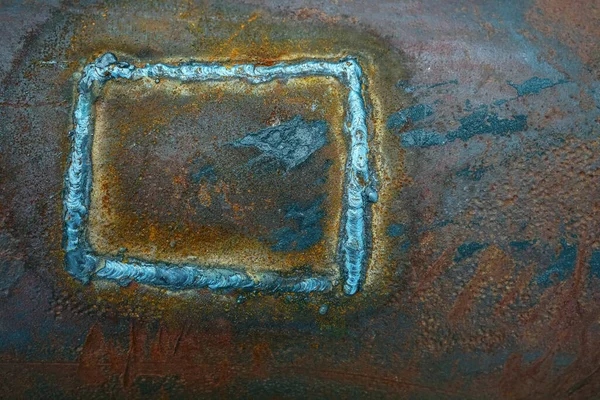-
Posts
5,304 -
Joined
-
Last visited
-
Days Won
1
Content Type
Events
Profiles
Forums
Media Demo
Posts posted by robw_uk
-
-
stunning work (as always)... I am struggling with german grey but have a couple more candidates in the stash... would you give a bit more detail on the streaking (I know the usual techniques but not quite mastering them)....
-
 1
1
-
-
very nice... am thinking i would like to build this too to go with the Austin A/C i am working on....
-
-
-
-
-
-
-
-
-
2 hours ago, Kingsman said:
I meant cutting shapes from pre-coloured decal sheet or strips, although whether the exact colours could be matched is another question. Bearing in mind that absolutely no-one knows exactly what the colours were. The colours shown in the kit artwork are little more than guesswork.
Before you break out the paint, bear in mind that green paints in WW1 were rare as the pigments were hard to come by. British vehicles were absolutely NOT green - although many model kit and paint manufacturers continue to insist they were. Service Colour was in fact a brown, not a green: often described as "khaki", a Hindi word for "dust". I've never seen green environmental dust. The only pigment was Ochre clay in a white lead base.
Once again we encounter the situation that no colour reference worthy of the name exists for WW1 colours. There are only 3 known surviving original-paint WW1 vehicles. The MkIV and Medium A tanks in the Brussels Royal Army Museum and the MkVIII tank model at Bovington. Online images of those vary in colour, which makes comparison difficult. The pigmentation is broadly similar to that of the WW2 colour SCC2. It has been suggested previously, by Mike Starmer IIRC, that the WW1 colour was slightly greener-looking than SCC2. I think here that I would be looking at a mix of SCC2 and Khaki Green 3. Out of the bottle, the AK Interactive 3G WWI British Colors Modulation set AK11644 or the older 3-bottle AK4040 aren't bad if you favour that painting method.
Below is one of my own photos of the MkVIII model. The discolouration around the joins and rivets is most probably from chemical reaction between solder, flux and the paint. The centres of the panels are the comparator.
thanks for that - and the tip on the colour. The instructions call for MIG 0074 "Green Moss". I would probably go for a pre-mixed colour so the AK Gen 3 set could well be possible (and comes with colours that would be useable in other circumstances.
And yes, I guess it is a scheme they have found and interpreted either some level of written instruction OR a B&W photo and they have gone "black", "brown", "pale blue", "yellow"
-
 1
1
-
-
thanks all for the encouragement.... pull up a pew, will be back with some more building later in the week
-
 2
2
-
-
1 hour ago, Hamden said:
I'll follow along for this one if you don't mind Rob
Stay safe Roger
more the merrier... glad to see you here
-
8 hours ago, Kingsman said:
If it wasn't for the rivets I might go for coloured decal sheet
then I would have to learn how to make decals....
my only thought now (and don't need to answer it yet) is the order of painting of the colours, and if I coat the whole body with a coluor, mask, coat whole body, mask etc etc.... or paint roughly where the mask will go.....
and then the order of colours. think of ending up with the black and then the main colour so thinking it will be light -> dark then green
-
1 hour ago, edjbartos said:
You'll enjoy this one Rob, It's a lovely kit to make, I did one a while back and really enjoyed it, good luck with the build...
Ed
cheers Ed, do you have the link for your build??
34 minutes ago, Kingsman said:There's a lot of masking in that kit.......
46 minutes ago, Milan Mynar said:There are a lot of details in that kit.
thanks both, thats the one thing with the scheme I like is the masking but I think with tamiya tape and a sharp blade I should be able to do it.....
-
 2
2
-
-
-
-
-
-
-
-
4 hours ago, Kingsman said:
Welds ALWAYS remain bright shiny, not just sometimes. Welds made in WW2 are still shiny today even on things that have been outdoors for decades. The corrosion life of weld metal has yet to be discovered: we aren't there yet. So far it is perpetually stainless. The areas to be welded and around the welds would have to be cleaned back to bare metal: you can't weld rust...... At least an inch beyond the weld area, possibly a bit more.
Armour plate also doesn't rust anything like as quickly as milder steels because of the natural corrosion-inhibiting qualities of other elements in the alloys: any of chromium, nickel, molybdenum, manganese and our old friend carbon. So I would say much, much less: barely a trace. The bare uncorroded metal would be a dark chocolate brown metallic. That piece on the glacis looks like it's been outside by the sea for 20+ years. By mid 1945 no piece of any Tiger was ever more than 3 years old. Those encountered by US forces in NW Europe with zimmerit never more than about 18 months. That tank might only have been knocked out weeks or days ago. How could it possibly have gone that rusty in such a short time? Although German armour quality must have been suffering by the end of the war for lack of ingredients. And was a lot harder to make once Sweden cut off iron ore supplies after D Day because central European iron ore only gave about half the yield of the Swedish ore, effectively meaning twice the processing and twice the energy use - coal, essentially. But Tigers would have been made from fine Swedish ore, as the very best armour plate today still is.
thanks... the fron armour on the prototype was made form boilerplate - is that the same thing as armour plate? wondering if that would;ve been more rusty....
-
4 hours ago, Mig Eater said:
Thanks, hadn't finished the rusty plate..... Have done now tho (and the turret add on armour).... I have silvered the welds and cut edges, just not very visible here ....
-
 3
3
-
-





















































Scammell Commander
in Work in Progress - Armour
Posted
bby boss instructions look a little difficult... hahahaha
and great build